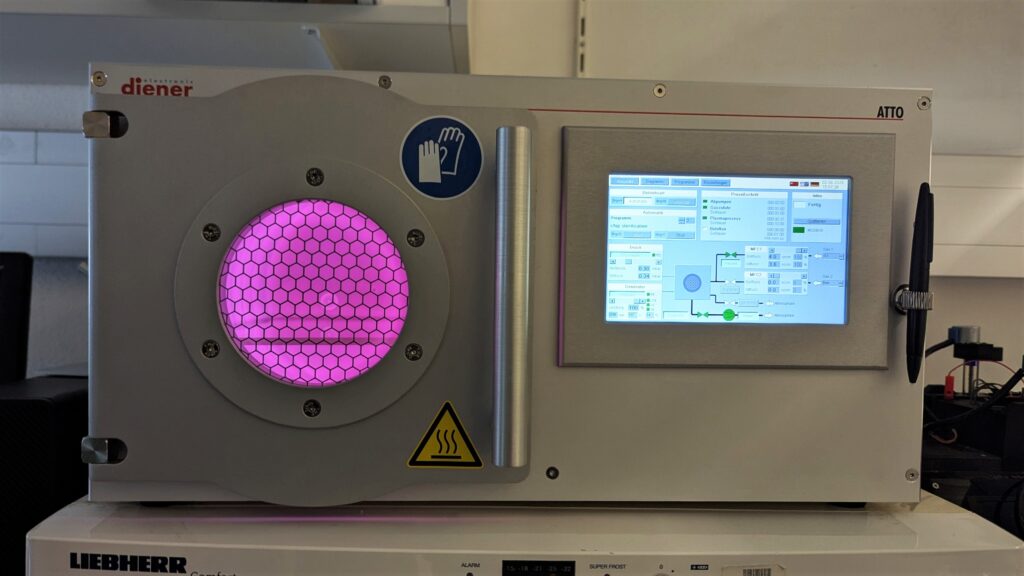Technology
3D Bioprinting and Tissue Engineering
3D bioprinting is a process in which special 3D printers are used to produce tissue models from previously cultivated individual cells. The process begins with the mass multiplication of individual cells using standard cell culture techniques, with the aim of obtaining sufficient material for the bioprint. The cells are then embedded in various bioinks (also known as ‘hydrogels’) and 3D printed. The composition of the hydrogels is of particular importance in reproducing the three-dimensional tissue architecture of the human body as realistically as possible and enabling the cells to differentiate. That’s why we established an in-house production of standardized hydrogels for the generation of our 3D bioprinted tissues.
The 3D Bioprinting Core Facility is equipped with three 3D bioprinter systems and a 2PP-Nano(bio)printer: the 3D Discovery BioSafety (RegenHu) , the BIO X6 (CELLINK), the INKREDIBLE+ (CELLINK) and the NanoOne bio (UpNano).
3D Bioprinters
The 3D Discovery System is a cutting-edge 3D bioprinter with four independent printing heads housed in a sterile hood. Two micro-extrusion print heads are designed for a broad range of different viscosities, from low-viscosity hydrogels to high-viscosity pastes (e.g. metals or ceramics). Two cell-friendly micro-jet print heads enable the spraying of hydrogel-embedded cells in very fine droplets or direct printing of nano-liter volumes with fine needles.
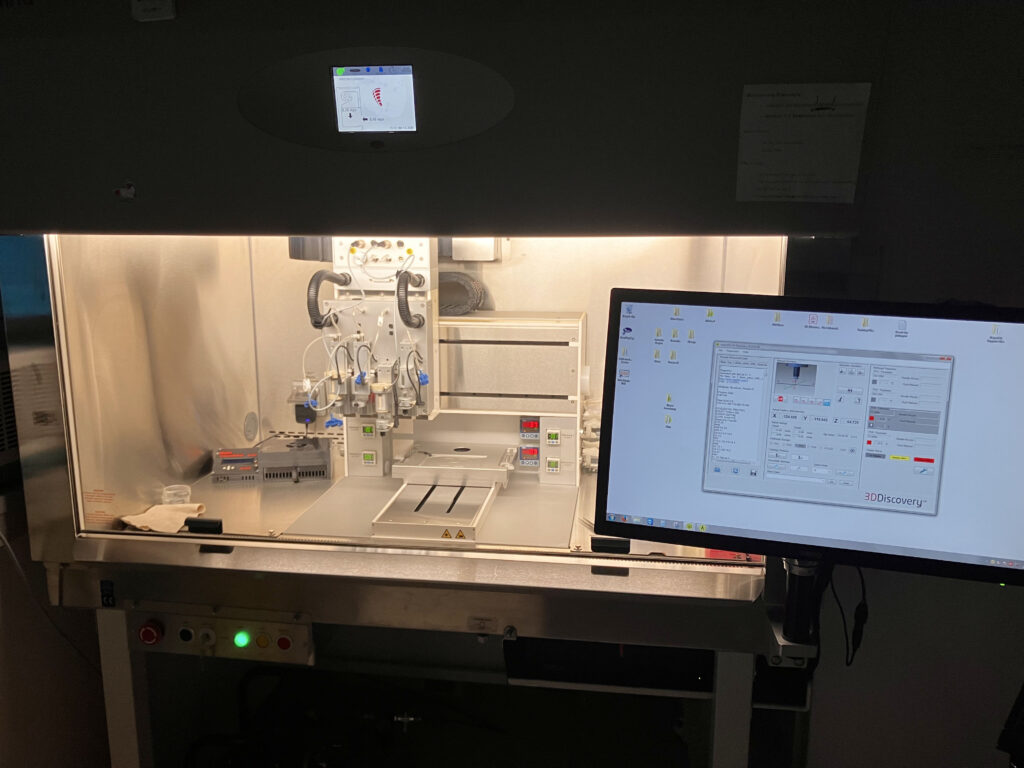
The BIO X6 is a microextrusion bioprinter that utilizes six independent, heated print heads to print low to medium viscosity bioinks/hydrogels within a sterile chamber equipped with a HEPA filter and UV sterilization. The accompanying software facilitates the design of complex biological 3D structures, allowing for the definition of distinct print patterns for each of the six print heads. This configuration enables the printing of up to six distinct cell types in various hydrogels and in different sequences. Furthermore, high-throughput production of tissue surrogates in multi-well plates is possible.
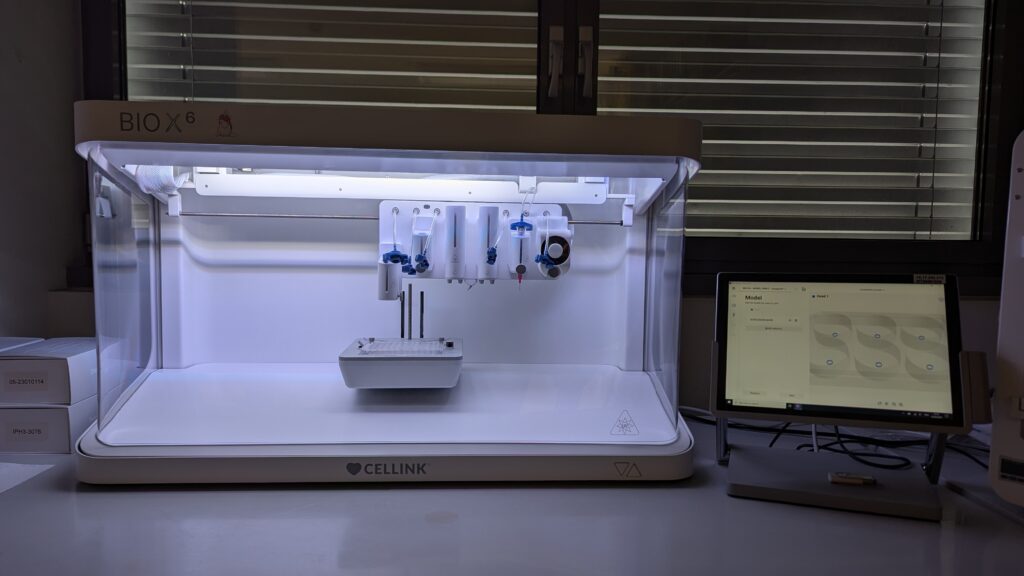
The LumenX bioprinter (LUMEN X™ – The new standard for light bioprinting – CELLINK) uses digital light processing (DLP) to solidify cell-ladden hydrogels layer-by-layer, thereby allowing precise printing of complex microfluidic structures.
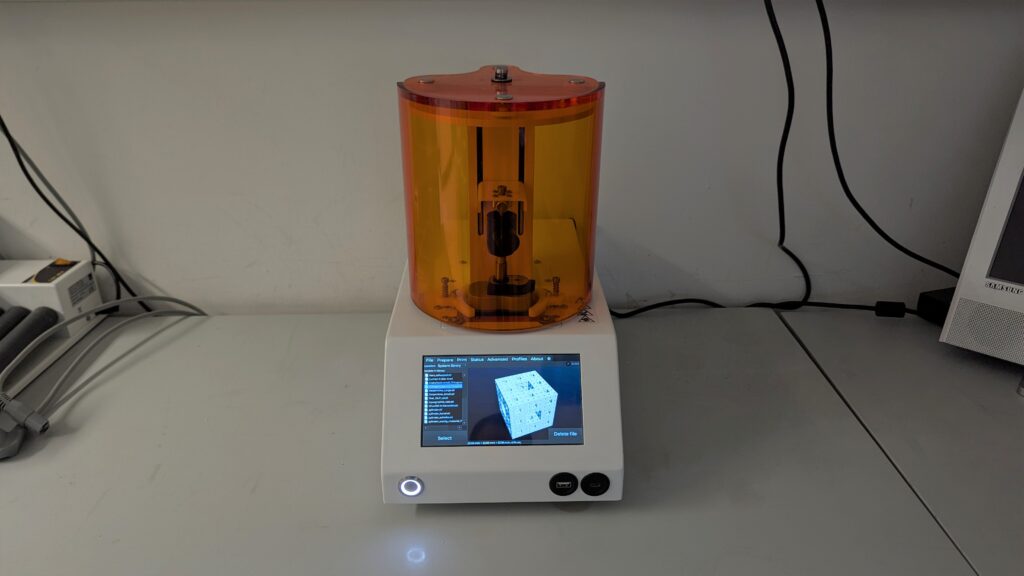
The INKREDIBLE+ is a micro-extrusion desktop printer with two independent, heated printing heads for low- to medium viscosity gels. For this system we designed a temperature-controlled printing platform to generate bioprinted structures with biomaterials that can be gelled on cold surfaces.
2PP-Nano (bio)printing
The NanoOne bio is a high-resolution, high-speed 3D printer based on 2-photon polymerization technology (2PP printing). In this process, an ultra-short laser pulse is emitted through an objective lens onto a spatially arbitrary point in a compatible resin, which polymerizes with highest precision at the focal point of the pulse. The use of objective lenses with different magnifications makes it possible to print structures ranging in size from centimeters to micrometers with a resolution down to the nanometer range. A wide range of available resins, which differ in terms of transparency, curing speed, autofluorescence, thermal stability or biocompatibility, allows us to cover a broad spectrum of applications.
For bioprinting, our NanoOne is also equipped with a Bio Unit, which enables a controlled environment regarding temperature, humidity and CO2 content. High-resolution 2PP printing down to the micrometer range can therefore also be applied to hydrogels loaded with living cells.
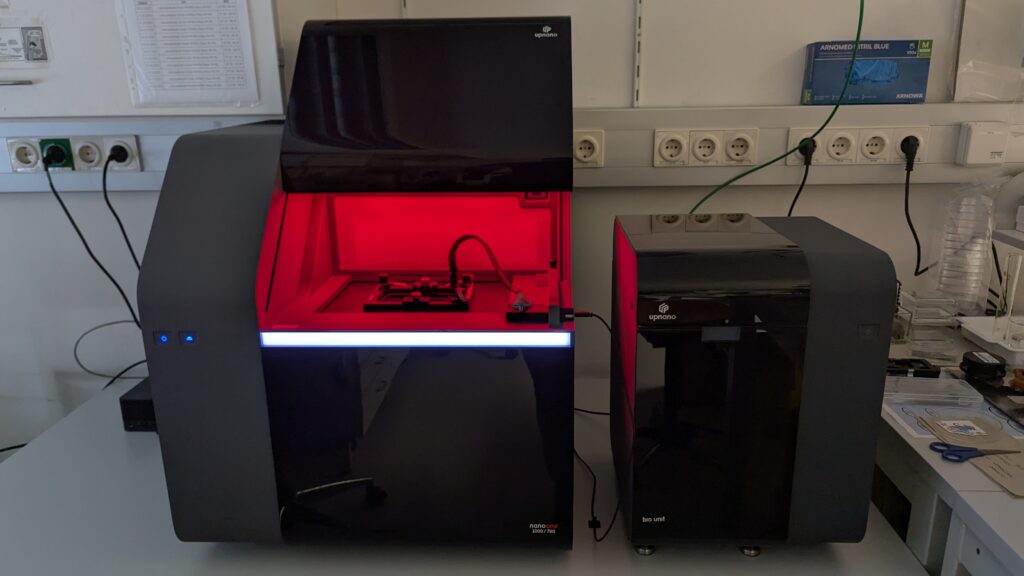
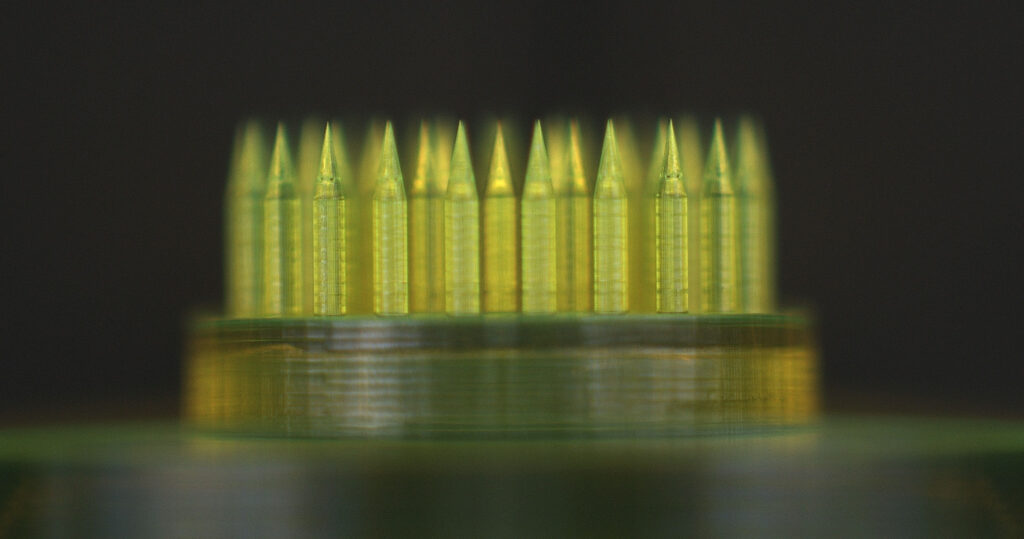
Analytical Infrastructure
FV4000 Confocal
With the Fluoview4000, we now possess a state-of-the-art confocal laser scanning microscope. It is equipped with a newly developed detector that enables a very low signal to noise ratio, higher sensitivity and improved photon resolution up to photon counting. A spectral detection wavelength of 400–900 nm enables us to use visible to near-infrared fluorescence dyes and capture data with high spectral efficiency up to 1 nm. A laser-diode-pumped phosphor light source combined with up to six channels of broadband or red-shifted detectors minimizes damage and reduces autofluorescence. Modular laser combiners allow the use of up to 10 laser lines from 405 nm to 785 nm in parallel. Our wide range of microscope objectives and the choice between a classic galvano scanner and a resonant scanner enables us to image different samples ranging from fixed cells to live cell imaging in 2D and 3D, and from the highest possible resolution to high speed cellular dynamics with low damage. The Clinical Imaging Software ‘CellSens Dimension’ supports complex analyses, such as colocalization and 6D image acquisition (XYZ, fluorescence channels, time, and stitching).
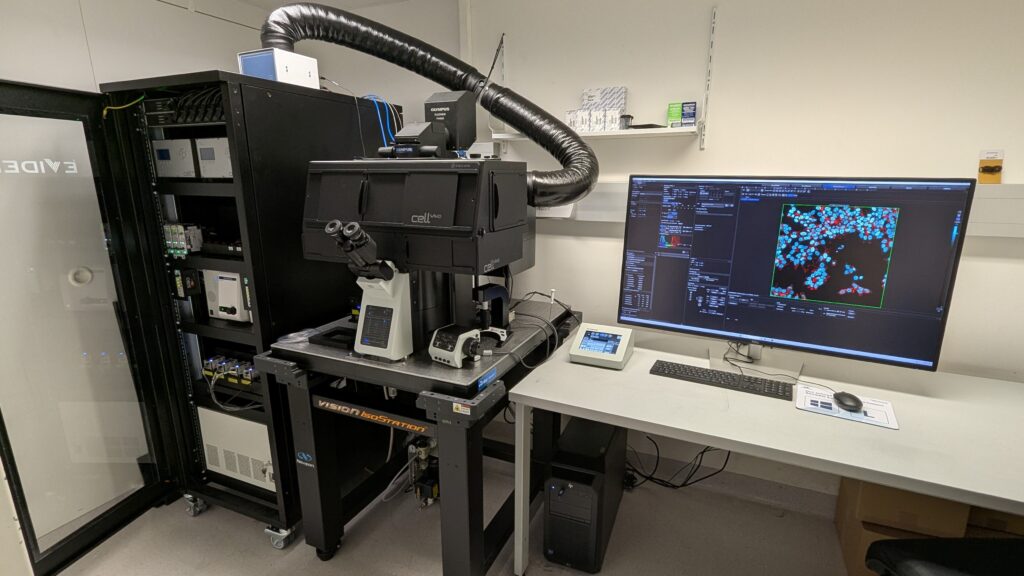
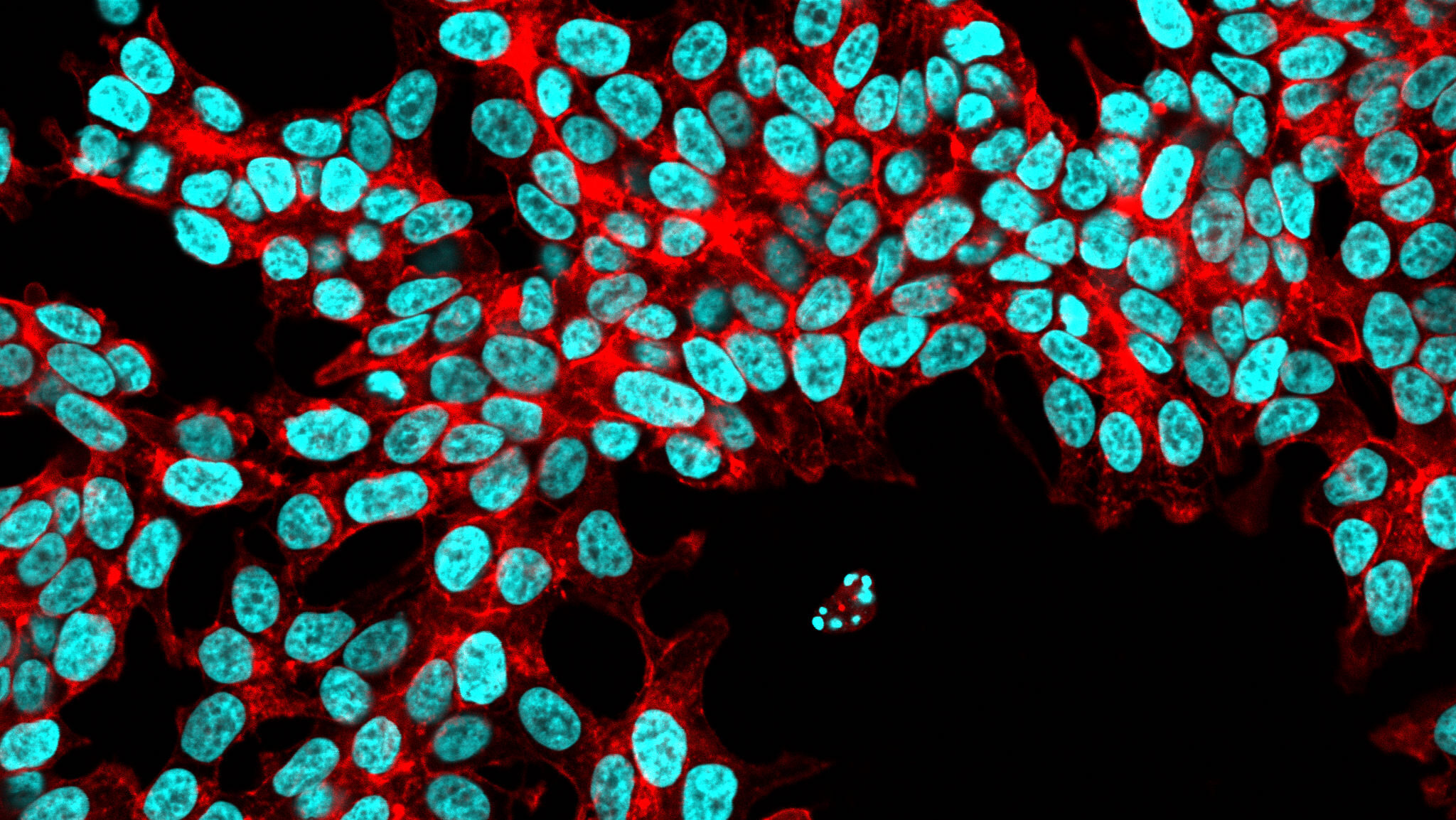
ElastoSens Bio Rheometer
The ElastoSens™ Bio is specifically designed for measuring the viscoelastic properties of biomaterials. The samples are measured on a flexible membrane that is submitted to vibration. The membrane displacement detected by a laser is used to determine the sample’s viscoelastic properties.
The ElastoSens Bio allows thermo- and photo stimulation to measure the rheological properties of hydrogels before and after polymerization. In the 3D Bioprinting Core Facility it is mainly used to test the viscoelastic properties and for quality control of our custom-developed hydrogels. In addition, 3D bioprinted tissue equivalents and their formation, stability and degradation can be monitored over time.
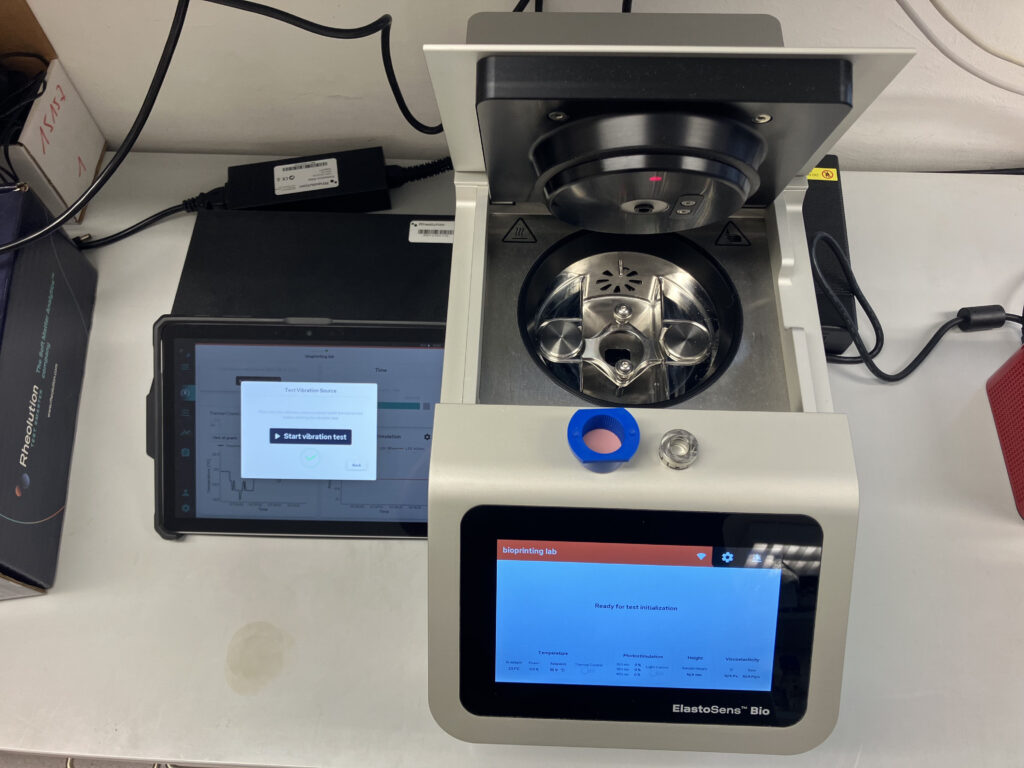
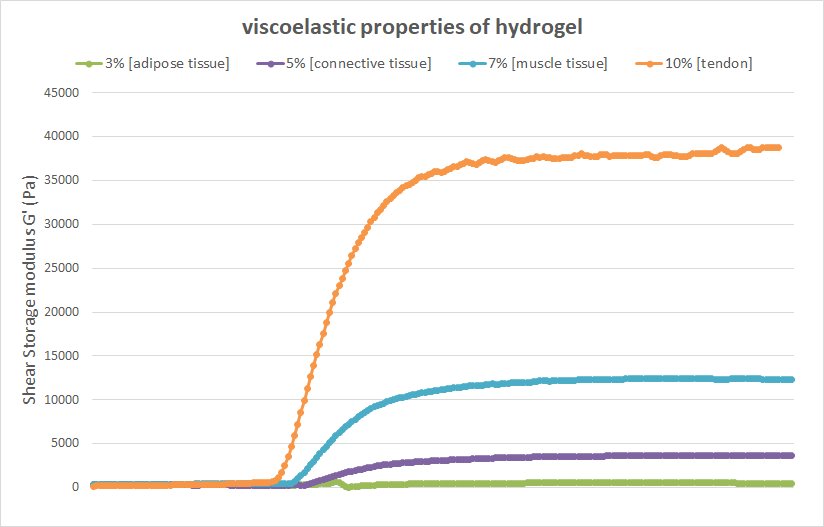
Keyence LSM
Our two Keyence VK-X3000 laser scanning microscopes are used for detailed observation and measurement of surface structures. Depending on the application, a confocal laser in the red or green wavelength range or focus variation is used in combination with a wide range of objective lenses from 2.5x to 150x magnification. This enables high-precision measurements and analyses of various artificial or biological samples with a maximum resolution down to the nanometer range. In the 3D Bioprinting Core Facility, we use the laser scanning microscopes for different applications, such as measuring our nano-printed objects or 3D printed tissue equivalents.
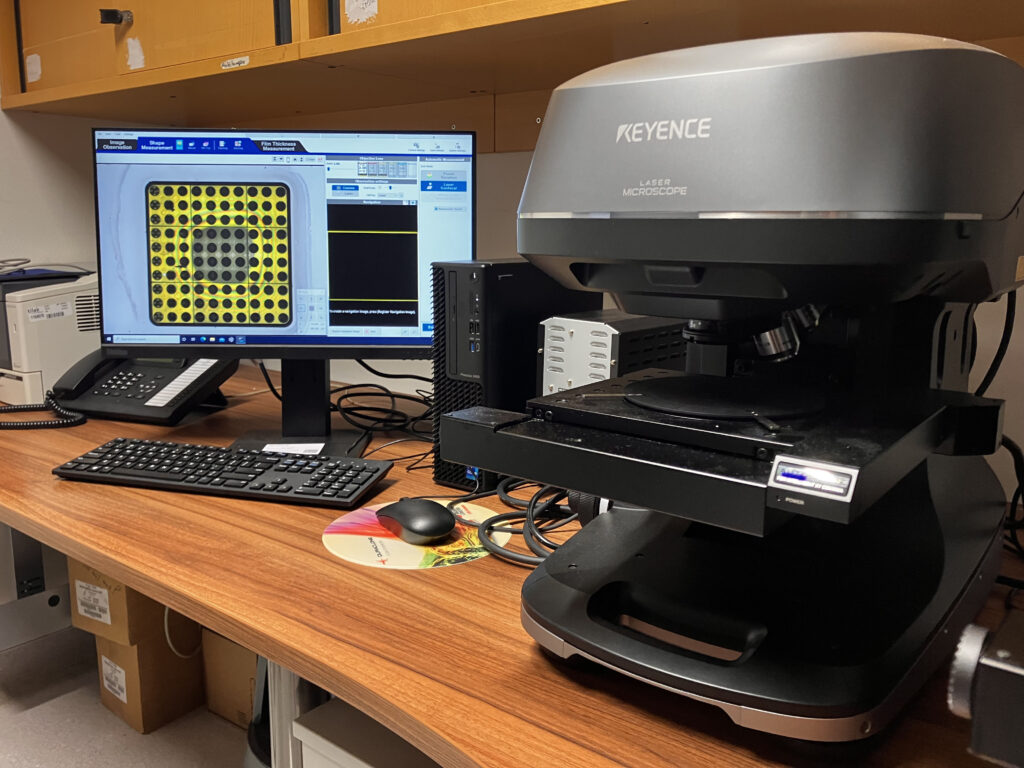
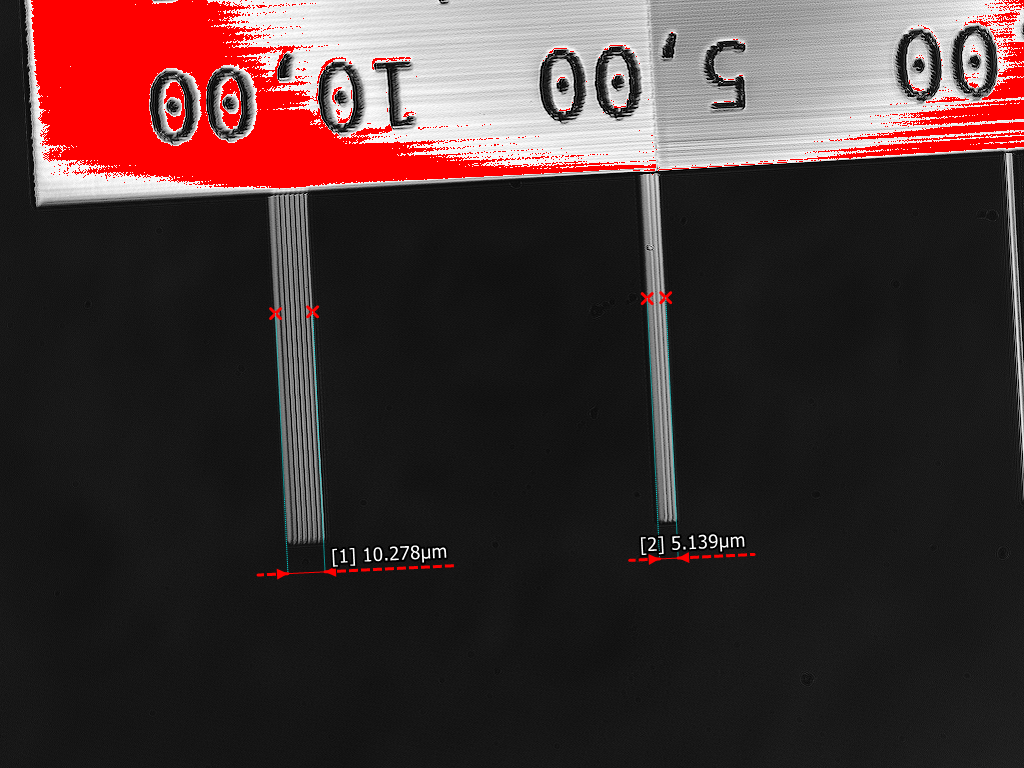
DxFLEX Flow Cytometer
The DxFLEX is a clinical flow cytometry platform which allows the use of up to three lasers and 13 detectors. In the 3D Bioprinting Core Facility a range of flow cytometry panels is being developed for the simultaneous detection and analysis of various cell types contained within our bioprinted tissue models. These include epithelial cells, immune cells and mesenchymal cells such as fibroblasts, pericytes or endothelial cells. Following tissue digestion, individual cell types can be identified based on surface biomarkers. At the same time various cellular characteristics, such as viability, senescence or hypoxia can be profiled in response to tissue differentiation protocols or various treatments.
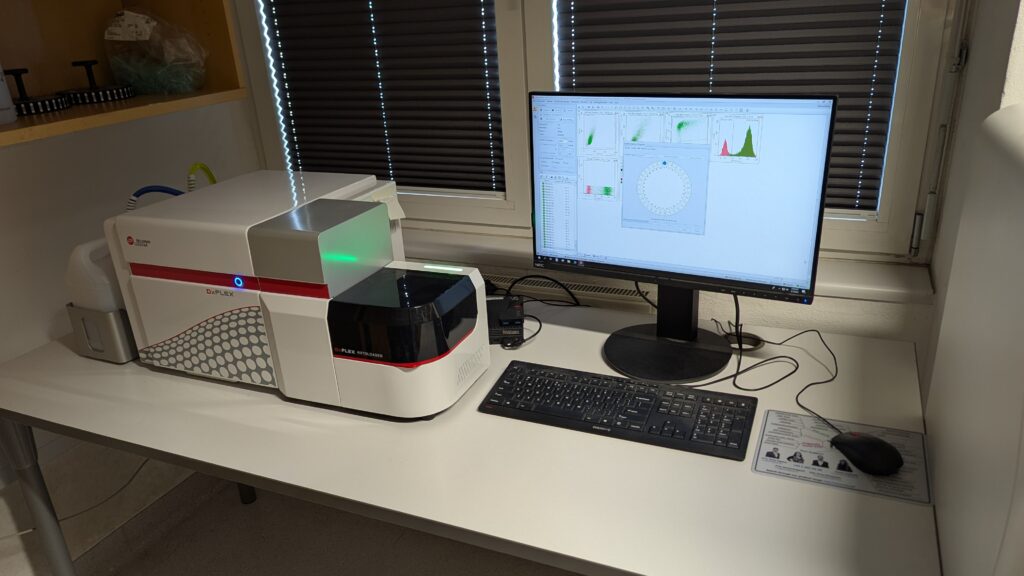
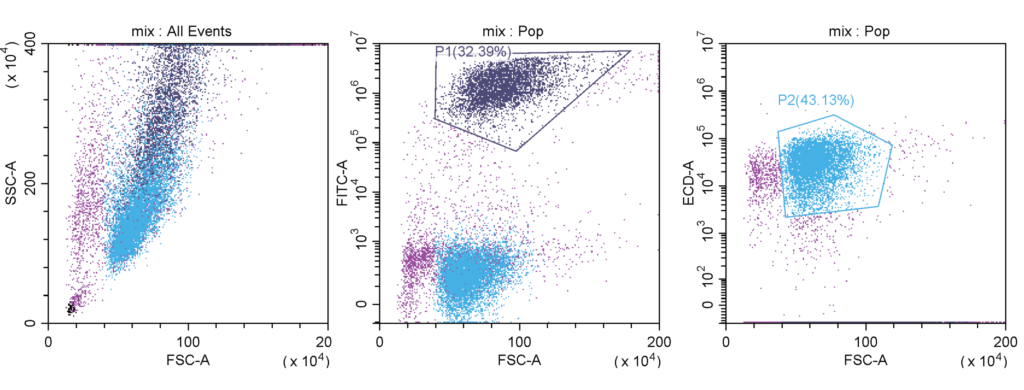
Tecan Spark Cyto 400
The TECAN spark cyto 400 is a multiwell plate reader capable to detect absorbance, fluorescence, luminescence, fluorescence polarization. Full environmental control for temperature, gas and humidity protection enables long term kinetic measurements of live cell assays.
At the same time, the Spark Cyto 400 serves as a multimode imaging platform offering 4 color fluorescence, bright field and phase contrast imaging on three magnification levels. It is thus possible to perform and observe various cell-based assays over time in a high-throughput fashion e.g. studying cellular proliferation, apoptosis, chemotaxis and spheroid invasion. In the 3D Bioprinting Core Facility, the TECAN spark cyto 400 is used for the observation of growth and differentiation of our 3D bioprinted tissues over time.
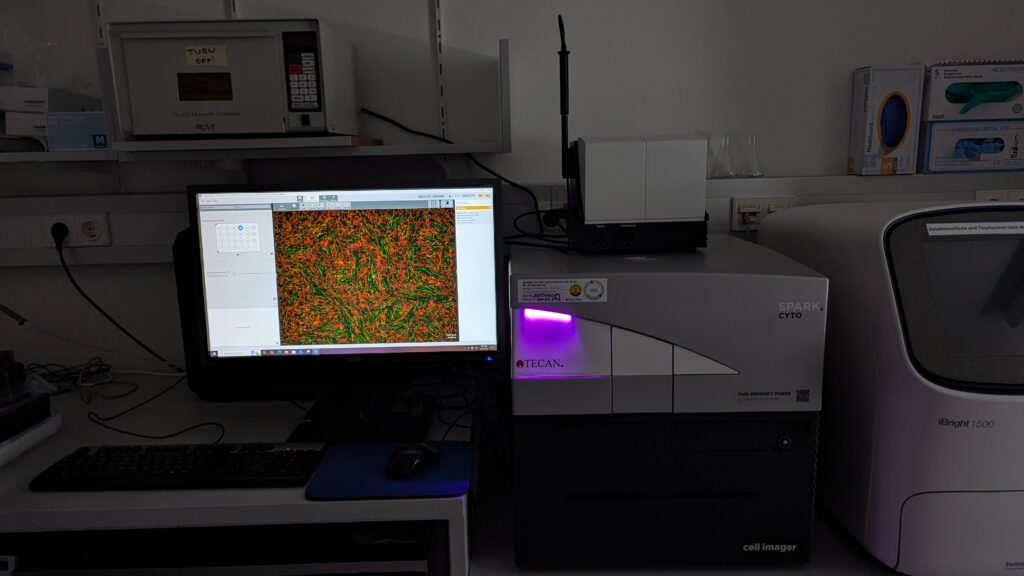

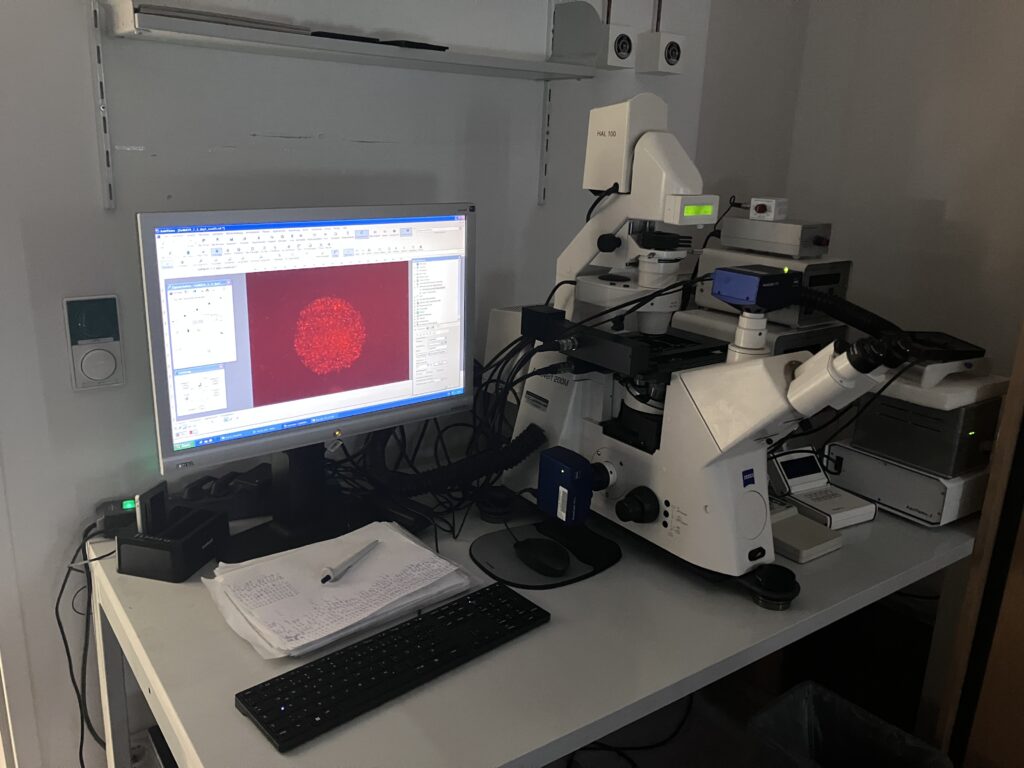
Axiovert 200M fluorescence microscope (Zeiss)
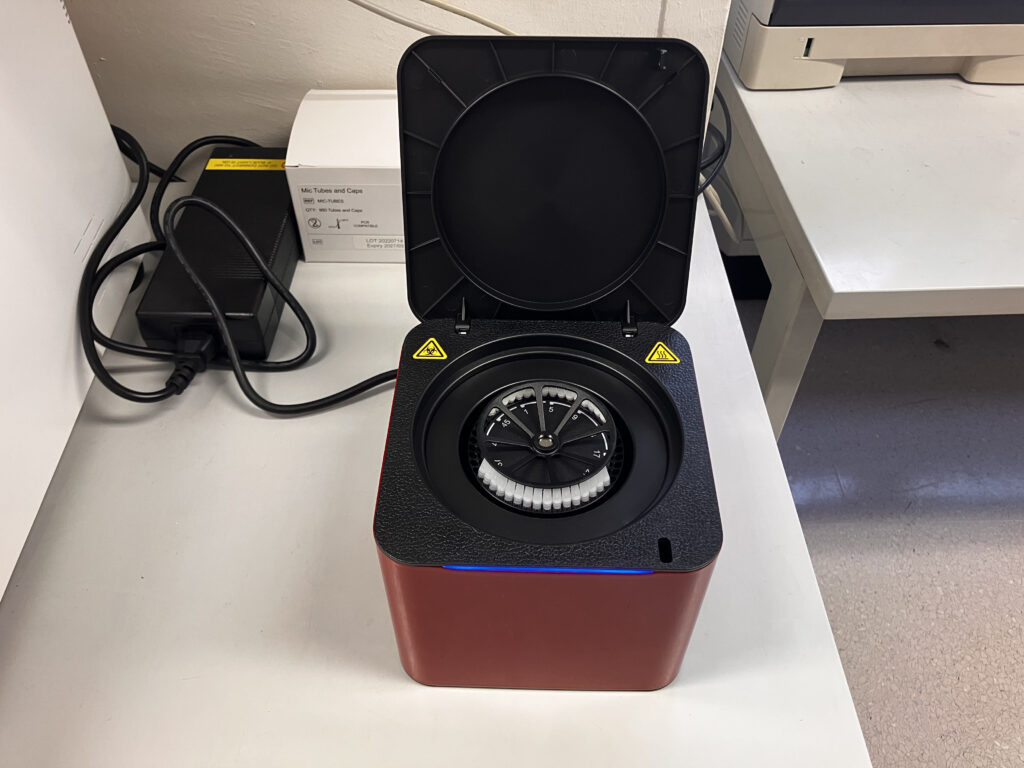
qPCR MIC Magnetic Induction Cycler
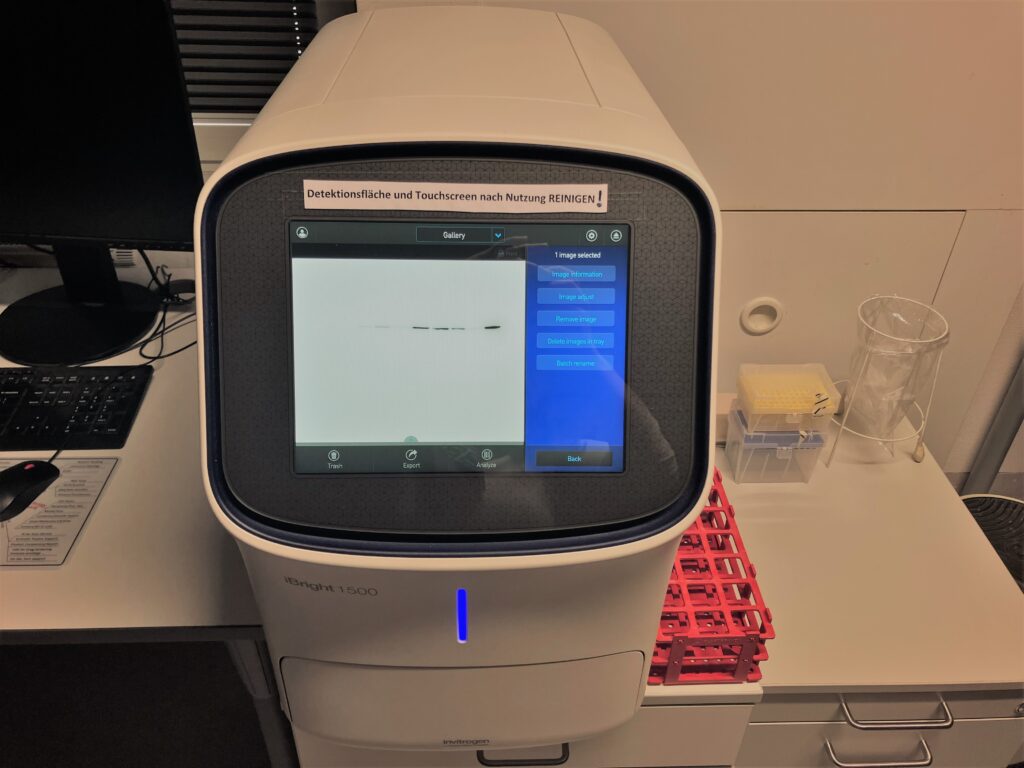
iBright Imaging System
